Gainesville, FL 32608
The University of Florida AHEC Program presents Free Tools to Quit Classes. Participate in a program that more than doubles your chances of quitting…
Update your location to show providers, locations, and services closest to you.
Knowing the serious health risks of using tobacco may help motivate you to quit. Using tobacco over a long time can increase your risk for many health problems.
Secondhand smoke - risks; Cigarette smoking - risks; Smoking and smokeless tobacco - risks; Nicotine - risks
Tobacco is a plant. Its leaves are smoked, chewed, or sniffed for a variety of effects.
HEALTH RISKS OF SMOKING OR USING SMOKELESS TOBACCO
There are many health risks from smoking and using tobacco. The more serious ones are listed below.
Heart and blood vessel problems:
Other health risks or problems:
Smokers who switch to smokeless tobacco instead of quitting tobacco still have health risks:
HEALTH RISKS OF SECONDHAND SMOKE
Those who are often around the smoke of others (secondhand smoke) have a higher risk for:
Infants and children who are often exposed to secondhand smoke are at risk for:
Like any addiction, quitting tobacco is difficult, especially if you are doing it alone.
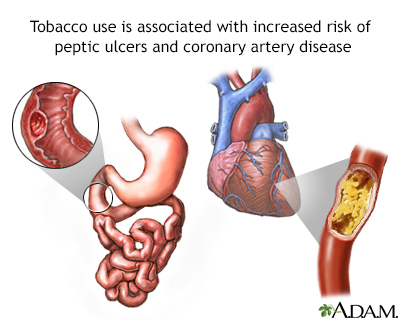
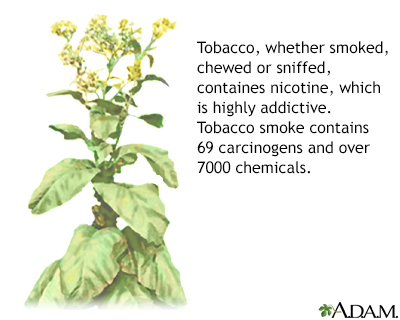
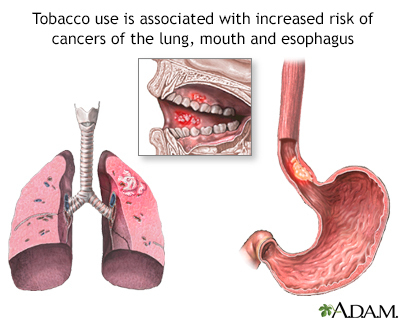
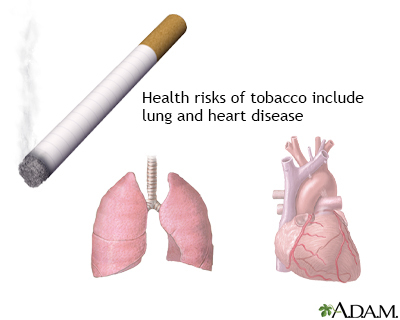
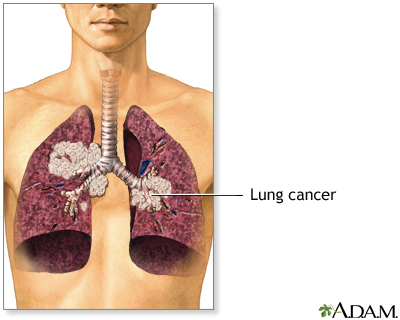
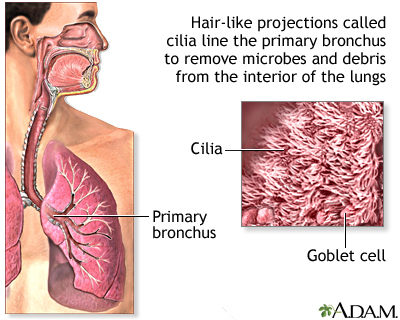
Atkinson DL, Minnix J, Cinciripini PM, Karam-Hage M. Nicotine. In: Johnson BA, ed. Addiction Medicine: Science and Practice. 2nd ed. Philadelphia, PA: Elsevier; 2020:chap 23.
Brunetta PG, Kroon L. Smoking cessation. In: Broaddus VC, Ernst JD, King TE, et al, eds. Murray and Nadel's Textbook of Respiratory Medicine. 7th ed. Philadelphia, PA: Elsevier; 2022:chap 66.
George TP. Nicotine and tobacco. In: Goldman L, Schafer AI, eds. Goldman-Cecil Medicine. 26th ed. Philadelphia, PA: Elsevier; 2020:chap 29.
Gotts JE, Benowitz NL. Smoking hazards: Cigarettes, vaping, marijuana. In: Broaddus VC, Ernst JD, King TE, et al, eds. Murray and Nadel's Textbook of Respiratory Medicine. 7th ed. Philadelphia, PA: Elsevier; 2022:chap 65.
US Preventive Services Task Force; Krist AH, Davidson KW, Mangione CM, et al. Interventions for tobacco smoking cessation in adults, including pregnant persons: US Preventive Services Task Force recommendation statement. JAMA. 2021;325(3):265-279. PMID: 33464343 pubmed.ncbi.nlm.nih.gov/33464343/.
Our community and patient programs provide great value to patients, families and loved ones. People can find support, educational materials, expert consultants and more. In most instances, these programs are offered free of charge.
For health and safety, all UF Health facilities and grounds are smoke free.
Free classes to help you quit smoking.
The University of Florida AHEC Program presents Free Tools to Quit Classes. Participate in a program that more than doubles your chances of quitting…
The University of Florida AHEC Program presents Free Tools to Quit Classes. Participate in a program that more than doubles your chances of quitting…